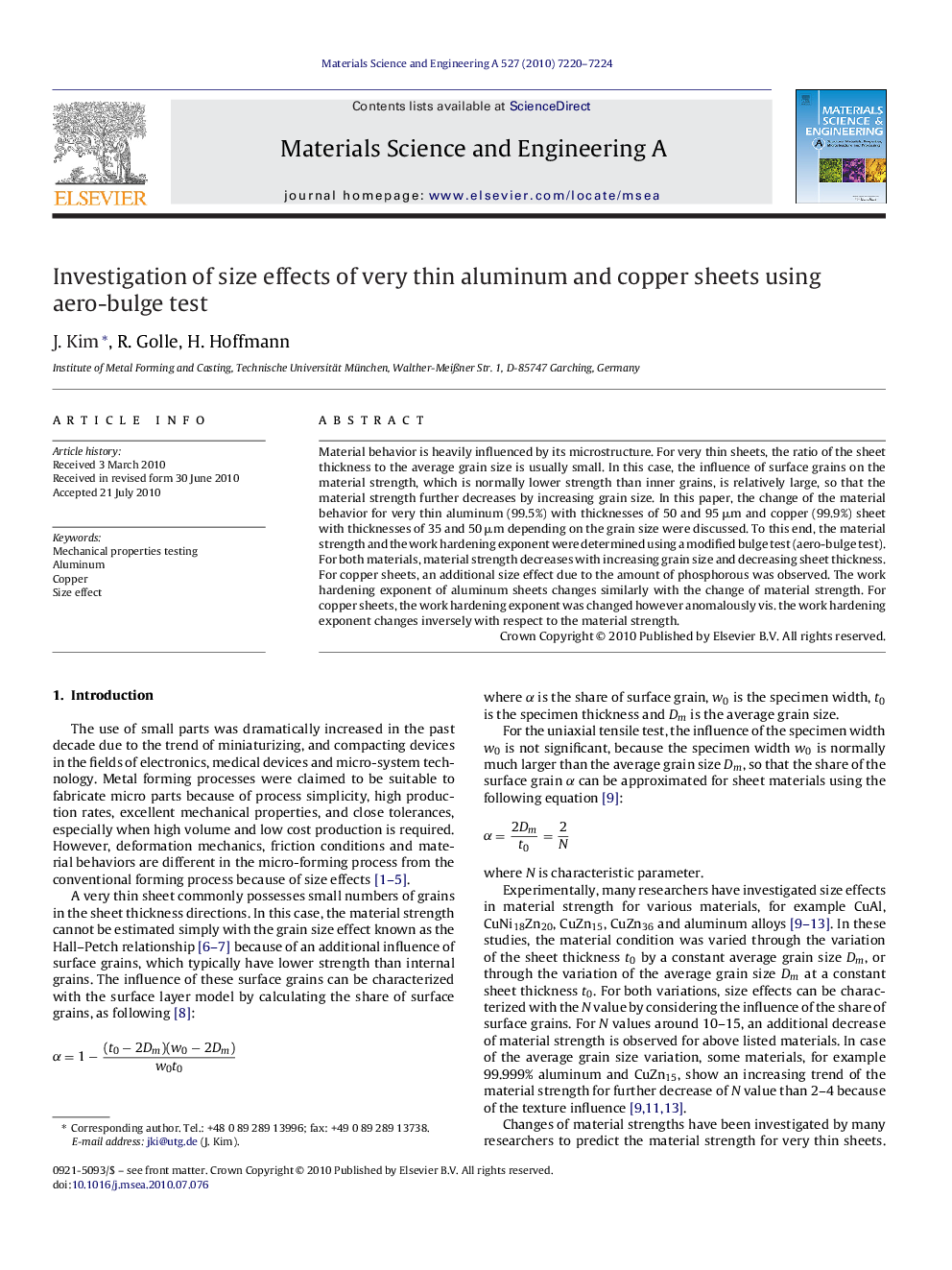| Article ID | Journal | Published Year | Pages | File Type |
|---|---|---|---|---|
| 1579393 | Materials Science and Engineering: A | 2010 | 5 Pages |
Material behavior is heavily influenced by its microstructure. For very thin sheets, the ratio of the sheet thickness to the average grain size is usually small. In this case, the influence of surface grains on the material strength, which is normally lower strength than inner grains, is relatively large, so that the material strength further decreases by increasing grain size. In this paper, the change of the material behavior for very thin aluminum (99.5%) with thicknesses of 50 and 95 μm and copper (99.9%) sheet with thicknesses of 35 and 50 μm depending on the grain size were discussed. To this end, the material strength and the work hardening exponent were determined using a modified bulge test (aero-bulge test). For both materials, material strength decreases with increasing grain size and decreasing sheet thickness. For copper sheets, an additional size effect due to the amount of phosphorous was observed. The work hardening exponent of aluminum sheets changes similarly with the change of material strength. For copper sheets, the work hardening exponent was changed however anomalously vis. the work hardening exponent changes inversely with respect to the material strength.
Research highlights▶ Size effects in material behavior for very thin aluminum and copper sheet. ▶ Work hardening exponent of aluminum sheets change similar with the strength depends on the microsturcture. ▶ Amount of phosphorous influences the strength of very thin phosphorous deoxidized copper sheets. ▶ Work hardening exponent increases with increasing grain size for phosphorous deoxidized copper sheets.
